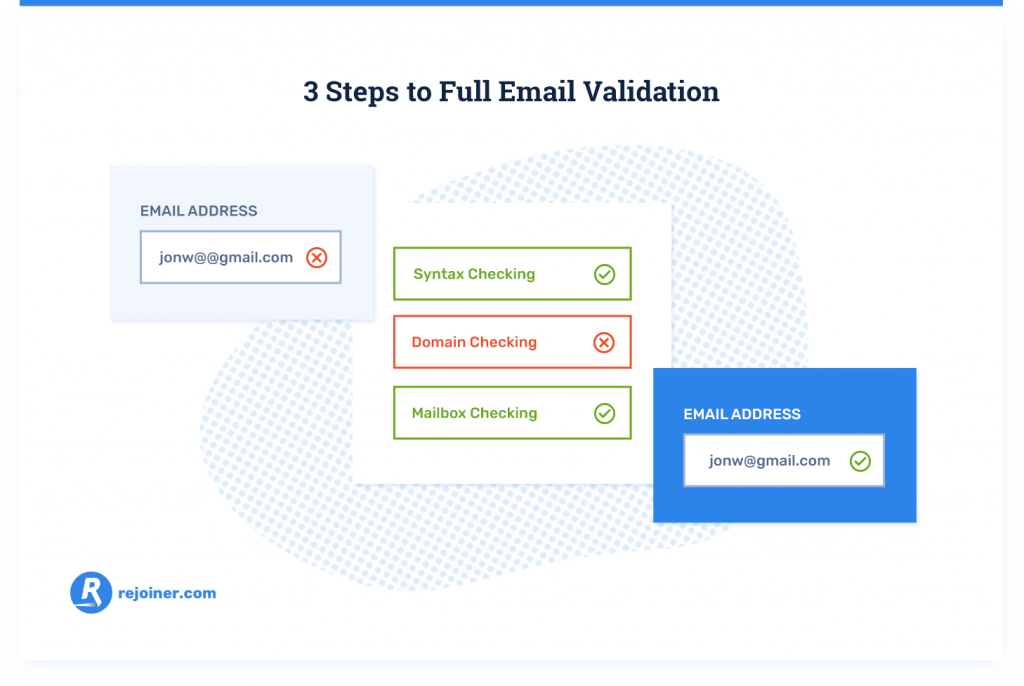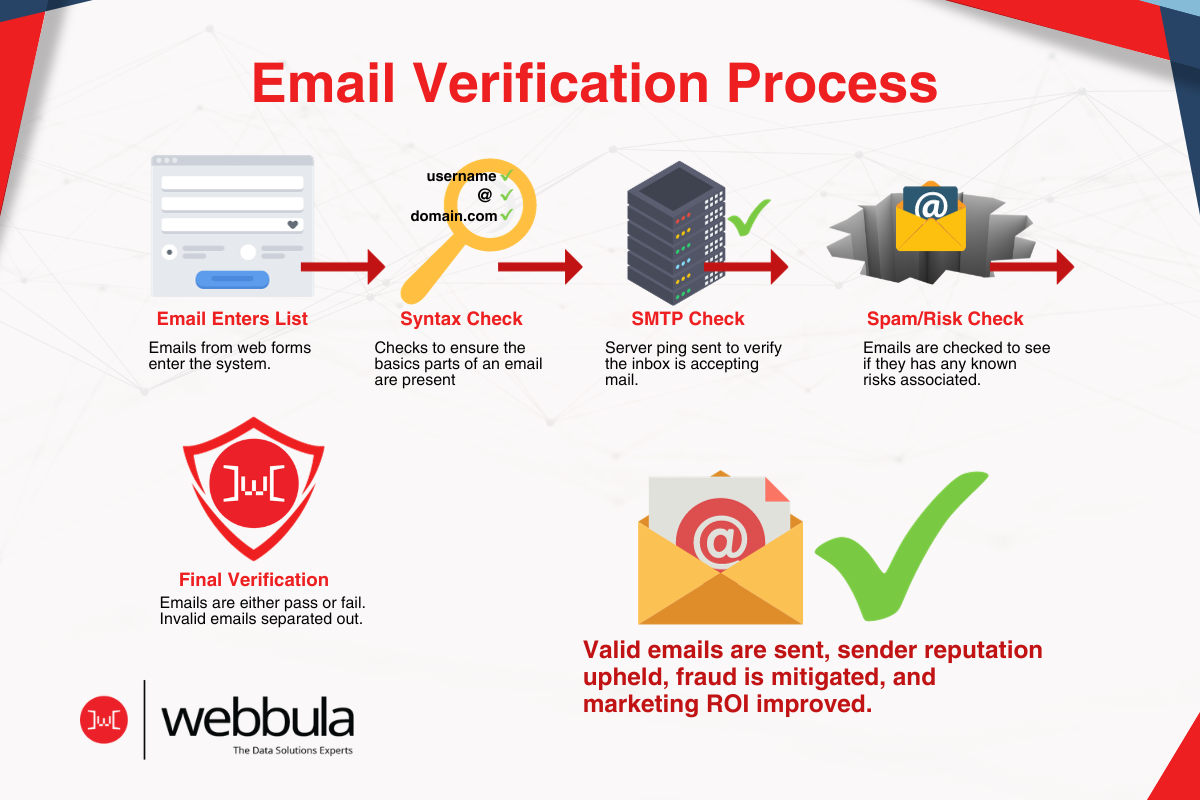Have you ever sent out a carefully crafted email campaign only to see your open rates plummet and bounce rates skyrocket? It’s frustrating, and the culprit might be lurking in your email list—unvalidated email addresses.
These rogue entries can derail your efforts, leading to undelivered emails, wasted resources, and a damaged sender reputation. But what if you could turn this around with a simple yet powerful tool?
In this guide, we’ll explore the critical importance of email validation and how it can transform your email marketing. You’ll learn about the best tools available, practical implementation steps, and the tangible benefits you can expect.
- Prioritise Email Validation: Unvalidated emails can severely harm your deliverability and sender reputation. Ensure regular validation to maintain high campaign performance.
- Choose the Right Tools: Selecting the appropriate email validation tools like ZeroBounce or BriteVerify can streamline the process and improve the accuracy of your email list.
- Integrate Validation Seamlessly: Implement real-time validation during form submissions and schedule regular list cleaning to keep your email database in top shape.
- Monitor and Adapt: Continuously monitor your email metrics and adjust your validation strategies to align with evolving campaign needs and technology.
Why is Validating Email Addresses Important?
Email has long been recognised as one of the most powerful tools in digital communication. It’s cost-effective, highly versatile, and email addresses are relatively easy to collect. However, despite its simplicity, managing email data is not without its challenges.
Research from Marketing Week shows that 60% of consumers deliberately provide incorrect information when submitting their personal details online, primarily due to privacy concerns or to avoid unwanted marketing communications. Supporting this, a study by Statista revealed that 7% of global consumers intentionally use a fake email address when making a purchase or registering for an account.
Beyond intentional inaccuracies, human error is another significant issue. Whether through typos or the difficulties of entering information on mobile devices, users often submit incorrect email addresses. In fact, a recent analysis of our customer data found that 57% of email addresses entered during checkouts or onboarding forms are incorrect on the first attempt. This creates an immediate barrier to communication and can significantly impact marketing efforts.
How Does Email Validation Work?
Step 1: Syntax and Formatting
The first task of any email address validation process is to check the syntax and formatting of the email. This ensures that the address contains all the necessary components in the correct order. It verifies essentials such as the presence of the “@” symbol, valid characters, and properly structured domain names.
This step is critical for removing entries that aren’t valid email addresses, whether due to intentional falsification or simple typing errors. Additionally, you can configure your email validation tool to filter out unmonitored inboxes such as admin@ or sales@, which typically do not engage with marketing communications. This is one of the foundational email validation best practices that ensures your list remains accurate and efficient.
Source: Loqate
Step 2: Domain Verification
After confirming the basic format, the next phase involves validating the domain. Here, the email address validation tool checks DNS and MX records to confirm that the domain is both properly set up and actively receiving messages. This process weeds out correctly formatted but invalid email addresses, as some domains may exist but no longer accept incoming mail. Ensuring that only active domains remain in your list is vital for protecting your email reputation and reducing bounce rates.

Step 3: Mailbox Check
The final stage is the mailbox verification process. In this step, the email validation tool communicates with the mail server via SMTP to determine whether the mailbox exists and is operational. This step effectively filters out disposable or temporary email addresses, which are often used to bypass marketing efforts and can negatively impact deliverability.
Crucially, none of these checks require an actual email to be sent. The entire validating email address process only takes a few seconds, allowing you to efficiently cleanse your email list and boost your campaign’s success without delay.
What Matters Most?
Prioritising email verification before launching campaigns can dramatically improve deliverability and protect your sender reputation. Ensuring a high level of data quality across the organisation leads to more effective marketing efforts, as every team recognises the value of maintaining a clean email list. Additionally, staying informed about industry standards and regulations related to email validation typically helps organisations adapt their practices and avoid compliance issues.Get In Touch
How can I check if an email address is valid?
Method 1: Send an Email to the Address
One of the simplest ways to check if an email address is valid is to send a message directly to it. This method is particularly useful for marketers with smaller lists or for those adding only a few new addresses at a time.
For example, you might send a polite message like:
“Hi, I’m just checking to confirm whether this email address is valid. If you receive this, please let me know.”
If the email address is fake or incorrect, your message will bounce back, typically accompanied by an error notification from your email provider. You may see a message like:
“Message not delivered: There was a problem delivering your message to someone@somewhere.com. Please see the technical details below or try resending in a few minutes.”
Alternatively, if the email address does not exist, you’ll likely receive a message stating:
“Address not found: Your message wasn’t delivered to someone@somewhere.com because the address couldn’t be found. Please check for typos or unnecessary spaces.”

Method 2: Use an Email Checker
Given the prevalence of fake email addresses, many services, known as email checkers or verifiers, are available to simplify validating email addresses. These tools can help confirm if an email address is valid with just a couple of clicks. While free versions are available, they typically limit the number of addresses you can verify each month. For higher volumes, subscribing to a paid service may be necessary.
When considering how to verify an email address, you have many services at your disposal, and most allow you to test them without committing to a purchase. Each tool differs slightly, but all are designed to be user-friendly, with many not even requiring registration. Choosing the right tool depends on the volume of email addresses you need to verify and the specific requirements of your campaigns.
Method 3: Perform an IP Address Lookup
Another method to confirm an email’s validity, which is less technical than it sounds, is performing an IP address lookup. Every email you receive comes with an IP address embedded within its source code, revealing the server it originated from. By viewing the source of the message, you can locate the IP address under the “received from” field.
Once you have the IP address, simply paste it into an online IP address lookup tool, such as the one provided by What Is My IP Address. After a few seconds, the tool will display the ISP, organisation, and geographical location associated with that IP. If the location of the IP address seems unusual or suspicious, it could indicate that the email is being spoofed or that the address is otherwise unreliable.
How Not to Validate Email Addresses
While there are several effective techniques for validating email addresses, there are also methods that are either outdated or potentially harmful to your email reputation. Employing these methods could lead to inaccurate results or even damage your standing with email providers.
VRFY Command
The Simple Mail Transfer Protocol (SMTP) includes a command called VRFY, which was originally intended to verify email addresses by opening a Transmission Control Protocol (TCP) connection to an SMTP server. In theory, this command should validate the address. However, most modern mail servers have disabled this feature for security reasons. As a result, while the VRFY command might seem like a practical solution, it is no longer widely supported or effective for email address validation.
Broken SMTP Handshake
Another outdated option is using a broken SMTP handshake. In a standard SMTP conversation, the final command sent is “DATA,” indicating that the client is ready to transmit the message’s content. After this step, the server will accept the message, and the client can either send another or terminate the connection using the “QUIT” command.
A broken SMTP handshake involves cutting the process short to avoid sending the actual message. While this technique can verify the existence of an email address without delivering content, it can also trigger negative consequences, such as harming your email reputation. Most modern email servers and providers discourage or outright prevent the use of such methods.

Best Practices for Email Validation
Ensuring that your email list is accurate and healthy is a cornerstone of any successful email marketing strategy. By following email validation best practices, you can protect your email reputation and significantly enhance deliverability rates. Let’s explore some of the most important methods to follow when validating email addresses.
Spam Traps and Risky Email Addresses
Sending emails to risky or inactive addresses can severely damage your email reputation. One of the most dangerous types of addresses to avoid is the spam trap.
Spam Traps
Spam traps are email addresses created specifically to catch spammers. These addresses often find their way onto lists through abandoned email accounts or questionable list acquisition methods. If you send emails to these traps, it can lead to your domain being blacklisted, preventing future emails from reaching inboxes.
Source: Marketing Week
For example, a subscriber who hasn’t engaged with your emails in a long time may have their email repurposed as a spam trap. This is why keeping your list clean through regular email address validation is essential.
Other steps to avoid spam traps include:
- Avoid using spammy language like “free,” “act fast,” or “earn money” in your emails.
- Track email activity back to source IP addresses to spot any suspicious or potentially harmful addresses.
- Never purchase or use email lists from questionable sources.
- Monitor deliverability errors and quickly address any flagged issues.
- Use permission-based lists to ensure recipients have opted in.
Proofreading emails to avoid common spam triggers can also improve your chances of landing in the inbox rather than the spam folder. For those managing large campaigns, professional proofreading services like Wordvice can review emails for compliance with spam filters, boosting deliverability and engagement.
Additionally, incorporating a cloud workload protection platform into your email strategy helps safeguard against security threats, enhancing the integrity of your campaigns and ensuring they reach their intended audience securely.
Complainers and Screamers
Some recipients, known as “complainers,” regularly mark emails as spam, while “screamers” may even threaten legal action over unwanted communications. To protect your email reputation, it’s crucial to identify and avoid sending to addresses that could contribute to high complaint rates.
Common Misconceptions About Email Validation
Despite its importance, email address validation is often misunderstood, leading to ineffective implementation. Let’s clear up some of the most prevalent myths surrounding this essential process.
Misconception: Email Validation is a One-Time Requirement
Many believe that validating email addresses is a task that only needs to be done once. However, email databases are constantly evolving—addresses may be deactivated, become obsolete, or change entirely. Regular validation is key to maintaining an accurate and active email list, ensuring ongoing deliverability and engagement.
Misconception: All Email Validation Services Offer the Same Level of Accuracy
Not all email validation services are created equal. Some tools may only perform basic syntax checks, while others dig deeper, verifying domain authenticity and mailbox existence. It’s essential to choose a service that aligns with your needs and provides comprehensive validation processes to ensure optimal accuracy.
Misconception: Email Validation Eliminates the Need for Engagement Analysis
Validating your list removes invalid addresses, but it doesn’t guarantee engagement. Some email addresses may be valid but still unresponsive. Ongoing engagement analysis helps you segment and target your audience effectively, ensuring your content resonates and delivers results.
Misconception: Email Validation is Only for Large Email Lists
Smaller lists might assume validation is unnecessary, but the quality of your email list is far more important than its size. Even smaller lists benefit from validation, as it ensures that every email reaches its intended recipient, optimising impact and efficiency across your campaigns.
Our Tactical Recommendations
From our experience, implementing real-time validation during the sign-up process allows you to capture accurate email addresses from the outset, which reduces future challenges. We often find that adopting a multi-layered approach to email validation—incorporating syntax, domain, and role-based checks—ensures comprehensive data accuracy.Get In Touch
How do I validate a list of email addresses?
Verifying email lists is a straightforward process when broken down into manageable steps. Ensuring you’re validating email addresses at scale is crucial for maintaining a clean, responsive email database and protecting your email reputation. Here’s how you can approach verifying larger email lists efficiently while adhering to email validation best practices.
Step 1: Remove Throwaway and Catch-All Emails
The first step in email address validation is to eliminate throwaway and catch-all addresses. These types of addresses hold little value in email marketing. Throwaway addresses are often created for one-time use and can skew your campaign’s metrics. Similarly, catch-all emails, which accept messages for any misspelled or invalid address at a given domain, may never be seen by the intended recipient.
Other valid yet undesirable addresses, such as role-based accounts (admin@, info@), should also be filtered out. Sending to these addresses can result in higher bounce rates or even get your domain placed on a blocklist. This is one of the key email validation best practices to protect your email reputation.

“`
Step 2: Verify Domain Names
Next, check the DNS entries associated with the domain names on your list. The goal here is to ensure the domain has a valid MX record, which designates the mail server responsible for accepting emails on behalf of that domain. If no valid MX record is found, the domain is flagged as invalid and removed from your list.
A tool like MXToolbox can help with this process. For example, entering “gmail.com” will return a valid DNS record, while entering a non-existent domain like “gmail.comm” will show no available name servers, signalling an invalid domain.
Step 3: Use an Email Verification Tool
Using a dedicated email verification tool is one of the most effective ways to validate email addresses at scale. Let’s explore a few of the top tools available:
ZeroBounce
ZeroBounce is a highly rated service praised for its accuracy, security, and wide range of features. Users receive 100 free verifications per month, with additional verifications available via a pay-as-you-go model. The larger the volume you verify, the lower the cost per verification. For example, 2,000 verifications cost $0.0075 each, whereas 10,000 verifications reduce the cost to $0.0064 per email. Enterprise clients requiring more than 2 million verifications receive bespoke pricing with further discounts.
Clearout
Clearout is another popular email verification service known for its speed, ease of use, and 98% accuracy. It offers a free account with 100 credits to start. Each credit verifies one email address, and you can opt for either a pay-as-you-go plan or a monthly subscription. The more credits you buy, the lower the price per verification. For example, 2,000 credits cost $0.007 per credit, but 10,000 credits drop the price to $0.0058 per credit.
EmailChecker
For a reliable option with longevity in the industry, EmailChecker is worth considering. Operating since 2009, it has grown from a free verification tool to a comprehensive platform offering syntax, domain, and mailbox checking. EmailChecker’s reputation as one of the most advanced email verification platforms on the web makes it an excellent choice for businesses looking for robust features.







